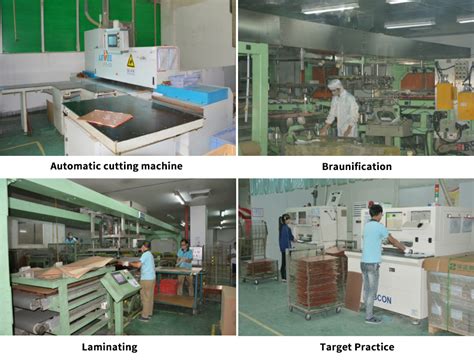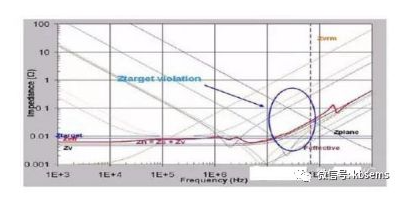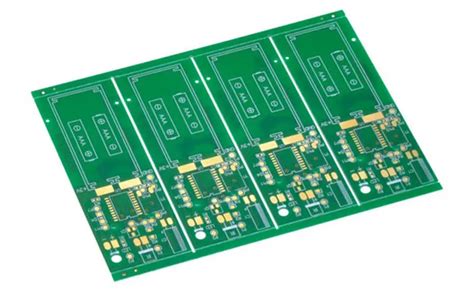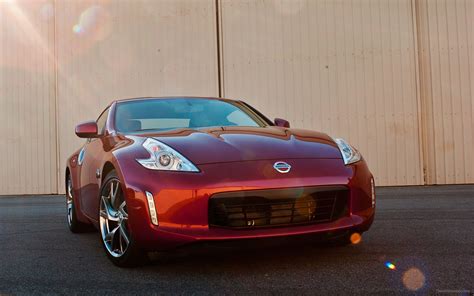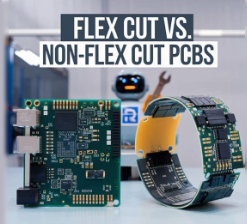Why do PCBs need gold plating?
1.PCB surface treatment:
Anti-oxidation, tin spraying, lead-free tin spraying, immersion gold, immersion tin, immersion silver, hard gold plating, full-board gold plating, gold finger, nickel-palladium gold OSP: low cost, good solderability, harsh storage conditions, short time, environmentally friendly process, good welding, flatness.
Spiking tin: The tin spraying board is generally a multi-layer (4-46 layers) high-precision PCB sample, which has been used by many large domestic communications, computers, medical equipment and aerospace companies and research institutions. The gold finger (connecting finger) is the connecting component between the memory bar and the memory slot, and all signals are transmitted through the gold finger.
The gold finger is composed of many golden conductive contacts. Because its surface is gold-plated and the conductive contacts are arranged like fingers, it is called “gold finger”.
The gold finger is actually a layer of gold coated on the copper clad board through a special process, because gold has strong oxidation resistance and strong conductivity.
However, due to the high price of gold, most memory is now replaced by tin plating. Since the 1990s, tin materials have become popular. At present, the “gold fingers” of motherboards, memory and graphics cards are almost all made of tin materials. Only the contact points of accessories of some high-performance servers/workstations will continue to use gold plating, which is naturally expensive.

2.Why use gold-plated boards
With the increasing integration of ICs, the IC pins are becoming more and more numerous and dense. However, it is difficult to flatten the fine pads in the vertical tin spraying process, which brings difficulties to SMT mounting; in addition, the shelf life of the tin spraying board is very short.
The gold-plated board just solves these problems:
- For surface mounting technology, especially for 0603 and 0402 ultra-small surface mounting, because the flatness of the pad is directly related to the quality of the solder paste printing process, it has a decisive influence on the quality of the subsequent reflow soldering, so the whole board gold plating is often seen in high-density and ultra-small surface mounting processes.
- In the trial production stage, due to factors such as component procurement, it is often not soldered immediately after the board arrives, but often takes several weeks or even months to use. The shelf life of the gold-plated board is many times longer than that of the lead-tin alloy, so everyone is happy to use it.
Besides, the cost of gold-plated PCB in the sample stage is almost the same as that of the lead-tin alloy board.
But as the wiring becomes denser, the line width and spacing have reached 3-4MIL.
Therefore, the problem of gold wire short circuit is brought about: as the frequency of the signal becomes higher and higher, the signal transmission in multiple plating layers due to the skin effect has a more obvious impact on the signal quality.
The skin effect refers to: for high-frequency alternating current, the current will tend to flow on the surface of the wire. According to calculations, the skin depth is related to the frequency.
To solve the above problems of gold-plated boards, PCBs using immersion gold boards have the following main characteristics:
- Because the crystal structure formed by immersion gold and gold plating is different, immersion gold will be golden yellow, which is yellower than gold plating, and customers are more satisfied.
- Compared with gold plating, immersion gold is easier to weld, and will not cause poor welding and customer complaints.
- Because the immersion gold board only has nickel gold on the pad, the signal transmission in the skin effect is in the copper layer and will not affect the signal.
- Because the crystal structure of immersion gold is denser than that of gold plating, it is not easy to produce oxidation.
- Because the immersion gold board only has nickel gold on the pad, it will not produce gold wire to cause micro short.
- Because the immersion gold board only has nickel gold on the pad, the solder mask on the circuit is more firmly combined with the copper layer.
- The project will not affect the spacing when making compensation.
- Because the crystal structure formed by immersion gold and gold plating is different, the stress of the immersion gold board is easier to control, which is more conducive to the bonding process for products with bonding. At the same time, because immersion gold is softer than gold plating, the immersion gold board is not wear-resistant for gold fingers.
- The flatness and standby life of the immersion gold board are as good as those of the gold-plated board.
For the gold plating process, the tinning effect is greatly reduced, while the tinning effect of immersion gold is better; unless the manufacturer requires binding, most manufacturers will now choose the immersion gold process. Generally, the following are the common PCB surface treatments:
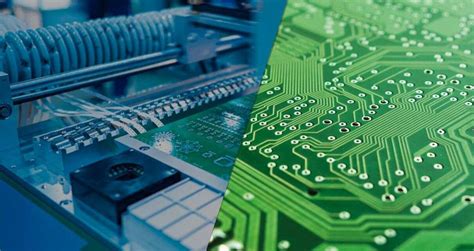
Gold plating (electroplated gold, immersion gold), silver plating, OSP, tin spraying (lead and lead-free).
These are mainly for FR-4 or CEM-3 boards, paper base materials and rosin-coated surface treatments; poor tinning (poor tinning) is excluded from the reasons of solder paste and other patch manufacturers and material processes.
Here we only talk about PCB problems, there are several reasons:
- When printing PCB, is there an oil film surface on the PAN position, which can block the effect of tinning; this can be verified by a tin float test.
- Whether the wetting position of the PAN position meets the design requirements, that is, whether the pad design can sufficiently guarantee the support of the parts.
- Whether the pad is contaminated or not, this can be tested with ion contamination; the above three points are basically the key aspects that PCB manufacturers consider.
The advantages and disadvantages of several surface treatment methods are that each has its own strengths and weaknesses!
In terms of gold plating, it can make the PCB store for a longer time, and it is less affected by the external environment temperature and humidity changes (relative to other surface treatments), and it can generally be stored for about a year; tin spraying surface treatment is second, and OSP is third. The storage time of these two surface treatments in the ambient temperature and humidity should be paid attention to.
Generally speaking, the silver immersion surface treatment is a little different, the price is also high, and the storage conditions are more stringent. It needs to be packaged with sulfur-free paper! And the storage time is about three months! In terms of tinning effect, immersion gold, OSP, tin spraying, etc. are actually similar, and manufacturers mainly consider the cost performance!


